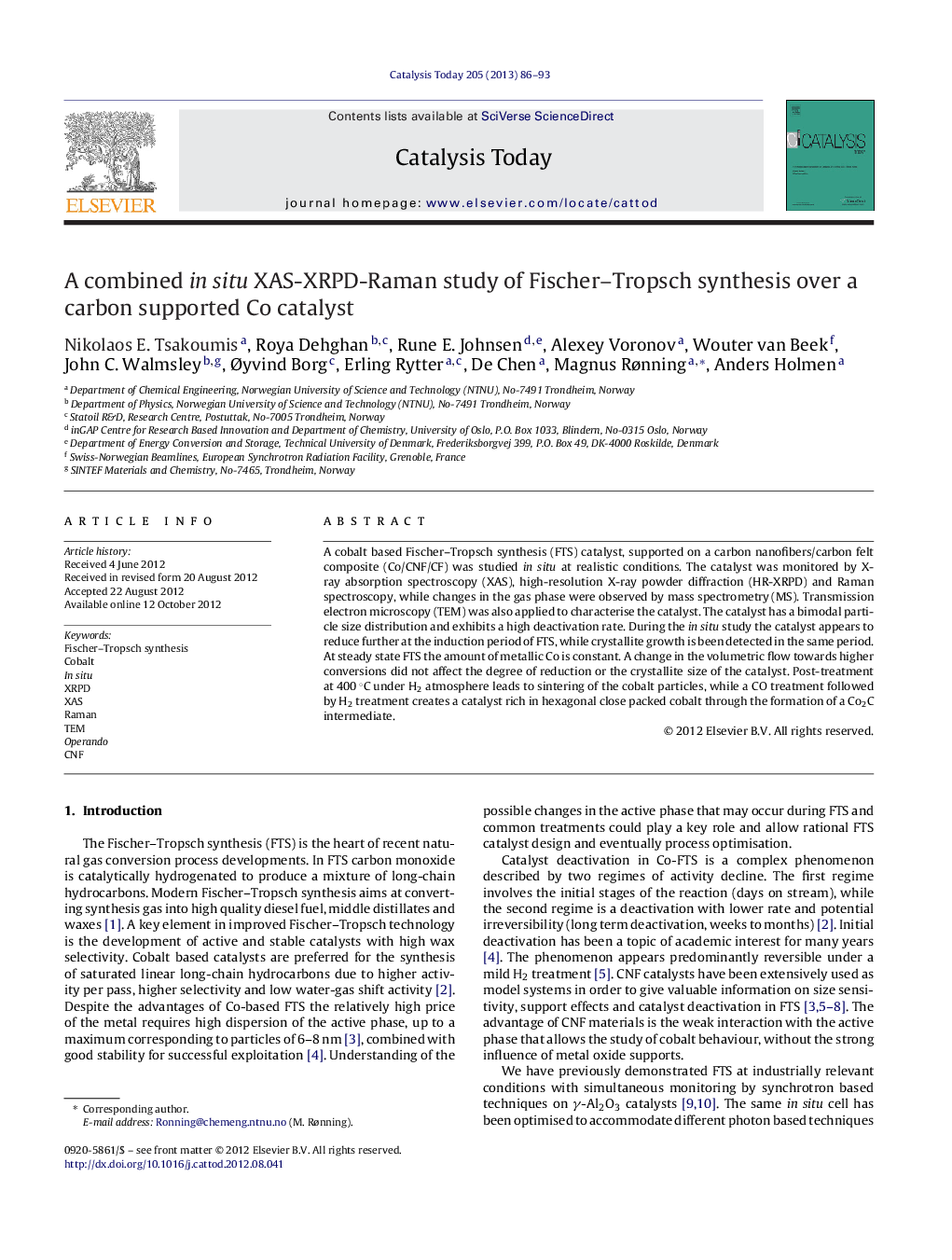| کد مقاله | کد نشریه | سال انتشار | مقاله انگلیسی | نسخه تمام متن |
|---|---|---|---|---|
| 54932 | 47032 | 2013 | 8 صفحه PDF | دانلود رایگان |

A cobalt based Fischer–Tropsch synthesis (FTS) catalyst, supported on a carbon nanofibers/carbon felt composite (Co/CNF/CF) was studied in situ at realistic conditions. The catalyst was monitored by X-ray absorption spectroscopy (XAS), high-resolution X-ray powder diffraction (HR-XRPD) and Raman spectroscopy, while changes in the gas phase were observed by mass spectrometry (MS). Transmission electron microscopy (TEM) was also applied to characterise the catalyst. The catalyst has a bimodal particle size distribution and exhibits a high deactivation rate. During the in situ study the catalyst appears to reduce further at the induction period of FTS, while crystallite growth is been detected in the same period. At steady state FTS the amount of metallic Co is constant. A change in the volumetric flow towards higher conversions did not affect the degree of reduction or the crystallite size of the catalyst. Post-treatment at 400 °C under H2 atmosphere leads to sintering of the cobalt particles, while a CO treatment followed by H2 treatment creates a catalyst rich in hexagonal close packed cobalt through the formation of a Co2C intermediate.
2D contour plot from the first derivatives of XANES spectra obtained throughout the experiment. Catalyst reduction, Fischer–Tropsch synthesis and post-treatments with H2 and CO are shown.Figure optionsDownload high-quality image (171 K)Download as PowerPoint slideHighlights
► A structured Co/CNF/CF felt composite catalyst was studied in situ at relevant FTS conditions.
► A multi-technique approach was used combining in situ XAS, XRPD and Raman spectroscopy and ex situ TEM.
► XRPD and TEM analysis detected two phases of Co having different particle size, unit-cell parameters and reduction rate.
► At 18 bar and 215 °C for low-GHSV and high-GHSV no changes in the DOR and the average crystallite size could be observed.
► H2 treatment at 400 °C led to Co crystallite growth, while a CO-H2 treatment produce a hcp rich catalyst.
Journal: Catalysis Today - Volume 205, 30 April 2013, Pages 86–93